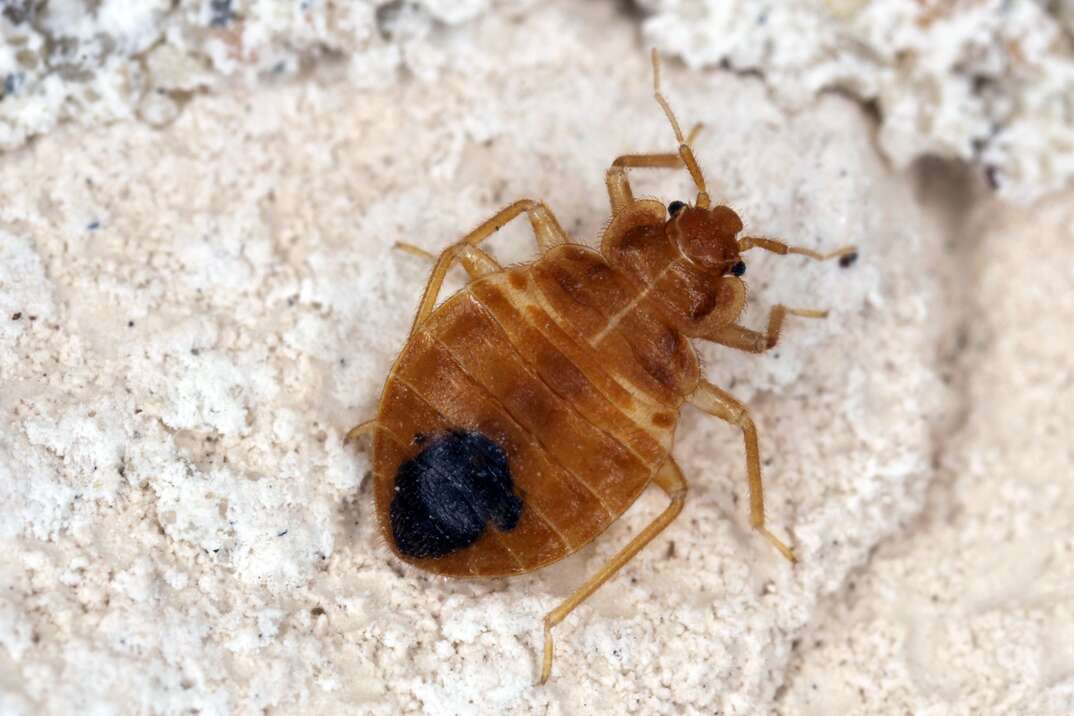- AppliancesElectriciansHVACLandscapingLocksmithPest ControlPlumbingRenovationRoofingT V RepairAll Home Improvement
- Car AccidentClass ActionCorporate LawCriminal DefenseDivorce LawEmployment LawFamily LawFinancial LawLegal AidMedical Injury LawyersMedical MalpracticeReal Estate LawWater Fire RestorationAll Legal
- InvestmentRetirementAll Finance
- Animal InsuranceAutoGeneral InsuranceHealth PolicyHome RentersAll Insurance
- DentalHealth SpecialistsAll Medical
- Animal CareVeterinaryAll Pets
- Auto GlassTowingAll Automotive
How Do You Know If You Have Bedbugs?

When you were a child, your parents may have whispered, “Sleep tight. Don’t let the bed bugs bite,” while tucking you in at night. Unfortunately, bed bugs don’t just exist in nursery rhymes — and they do bite.
Read More Pest Control Articles
To keep these nasty critters away from your home and family, it’s important to be vigilant and check your living space regularly for signs of bed bugs, such as bites upon waking. If you’ve ever wondered how to determine whether you have bed bugs, here’s everything you need to know.
What Do Bed Bugs Look Like?
A bed bug’s appearance depends on its life stage. Adult insects, which are no larger than apple seeds, are brown and have a flat, oval shape with a beak, antenna and golden hairs. Female bed bugs have much more rounded abdomens than their male counterparts. If they’ve recently fed, both males and females typically swell, which gives them a reddish-brown, balloon-like appearance.
Juvenile bed bugs, known as nymphs, are smaller than the adults. They may be whitish-yellow or even translucent. Because of their size and color, nymphs may be nearly invisible.
What Are Some Signs That You Have Bed Bugs in Your House?
Because bed bugs are so small, they can easily hide in spaces no wider than your debit card. Worse, juveniles can be nearly invisible to the eye, making them all but impossible to spot. However, you can preempt an infestation by being on the lookout for these early signs of bed bugs:
- Live bed bugs: Bed bugs can be difficult to see, but a close inspection of common hiding spots, particularly at night, can reveal live insects.
- Dark spots: Fecal spotting can cause dark spots on bedding, upholstery and other household fabrics. Look closely because these stains are typically only about the size of a pinhead.
- Rusty stains: When bed bugs are crushed, they leave small, reddish stains on mattresses, cushions and other home surfaces.
- Eggs: Bed bug eggs are white and oval. They’re typically about the size of an apple seed and usually appear in clusters.
- Shed skins: Juvenile bed bugs shed as they grow, leaving behind pale yellow skins.
- Musty odors: Sniff around your bed and couch. If you detect a sweet, musty odor that's reminiscent of dirty shoes, it could be an early sign of a bed bug infestation.
- Bites: Because bed bugs feed on blood, they’ll bite the people and pets in your household. You’ll often find these bites in clusters on exposed areas of skin.
When checking for signs of bed bugs, be sure to inspect common hiding places, such as:
- Wall voids
- Bed frames
- Couch cushions
- Dresser drawers
- Curtain folds
- Molding and trim
- Electrical receptacles
- Loose wallpaper
- Mattress or box spring seams
Can You Prevent Bed Bug Infestations?
Bed bugs can enter your home on bedding, furniture, clothing and other items. They can even hitch a ride on your handbag. Worse, because they’re experts at hiding and typically only come out at night, bed bugs can breed unnoticed. This can lead to widespread infestations, which can be difficult to get rid of.
Fortunately, you can reduce your risk of a bed bug infestation by following a few simple guidelines:
- Examine used furniture for signs of bed bugs before bringing anything home.
- Seal mattresses and pillows in protective covers to eliminate hiding spots.
- Vacuum carpets and rugs thoroughly and often.
- Change and wash bedding regularly.
- Seal cracks and openings around baseboards and light fixtures if you live in an apartment or multifamily home.
- Inspect the bed and luggage rack when traveling, so you don’t bring home hitchhikers.
More Related Articles:
- What to Look For When Hiring an Exterminator
- Are Pest Control Products Dangerous For Kids and Pets?
- What Are Ultrasonic Pest Repellers?
- 10 Ways to Prevent Termites
- How to Spray for Mosquitoes
Are Bed Bugs Dangerous?
Government entities, including the Environmental Protection Agency, consider bed bugs a public health threat. However, unlike other biting pests, such as ticks and mosquitoes, bed bugs aren’t believed to transmit diseases to people or animals. However, they do bite, often causing itching and discomfort. In some cases, they may cause an allergic reaction, such as hives or blisters. Scratching bed bug bites can also lead to infection.
What Should You Do If You Believe You Have Bed Bugs?
If you think you have a bed bug problem, it’s important to react quickly, so the infestation doesn't worsen. Homeowners should take immediate steps to halt the spread of the infestation and eradicate these pests by:
- Removing or sealing away infested items
- Vacuuming thoroughly
- Running clothing, bedding and other fabrics through a high-temperature dryer cycle
- Steam-cleaning crevices, furniture and other infected areas
- Treating the affected area with bed bug-specific foggers or pesticides
However, bed bugs can be difficult to eradicate, and extensive infestations often require treatment from a professional pest control company.
Elocal Editorial Content is for educational and entertainment purposes only. Editorial Content should not be used as a substitute for advice from a licensed professional in your state reviewing your issue. Systems, equipment, issues and circumstances vary. Follow the manufacturer's safety precautions. The opinions, beliefs and viewpoints expressed by the eLocal Editorial Team and other third-party content providers do not necessarily reflect the opinions, beliefs and viewpoints of eLocal or its affiliate companies. Use of the Blog is subject to the
Website Terms and Conditions.The eLocal Editorial Team operates independently of eLocal USA's marketing and sales decisions.



